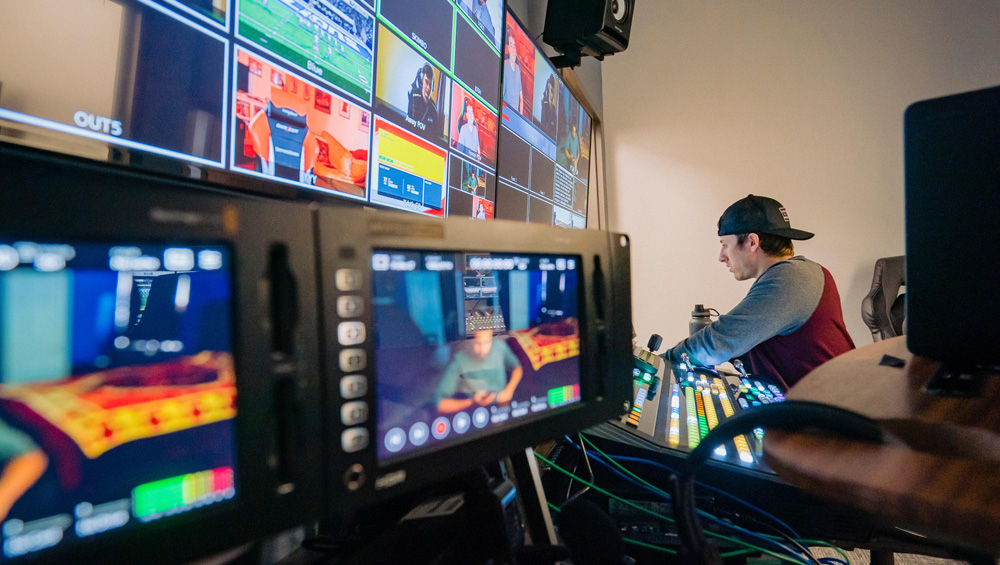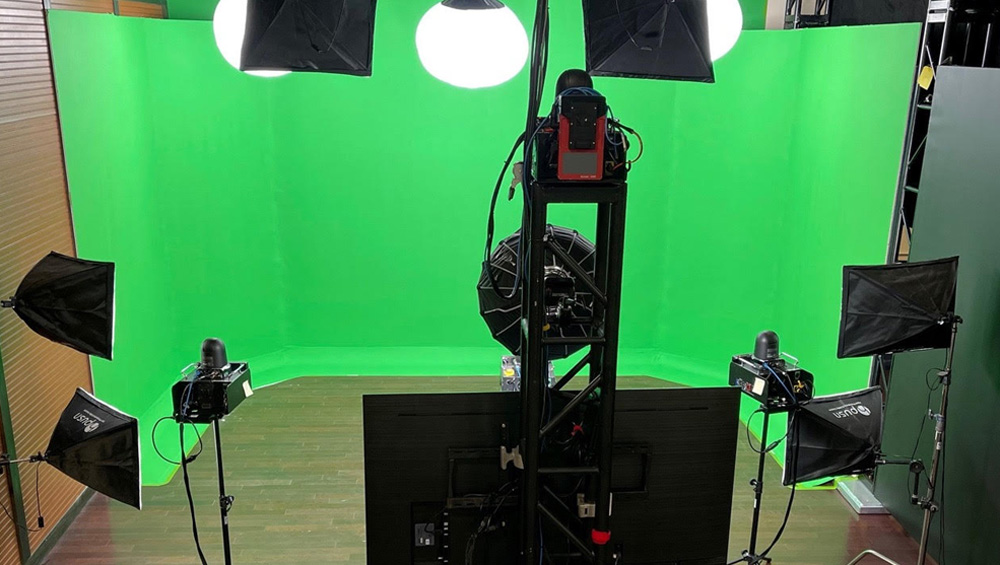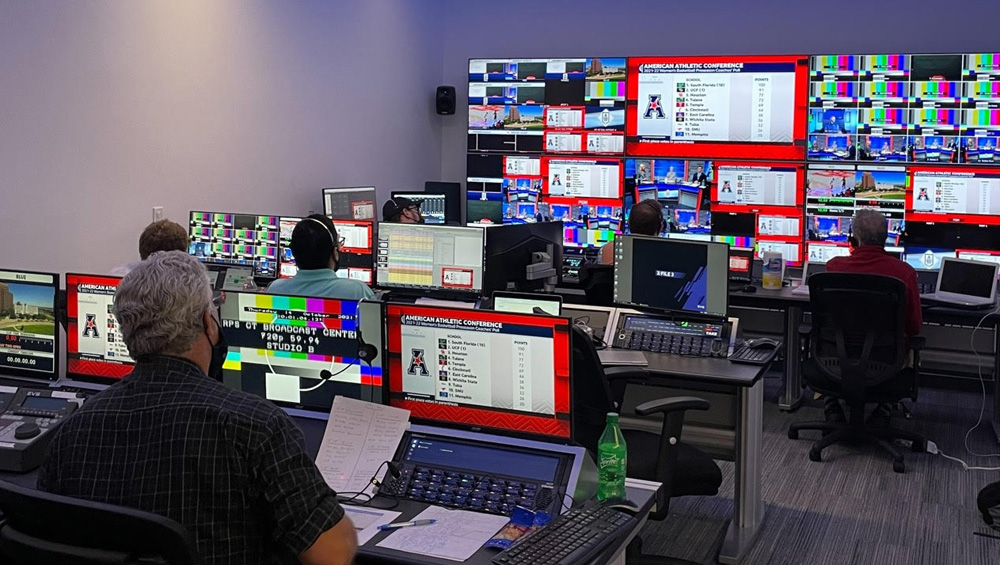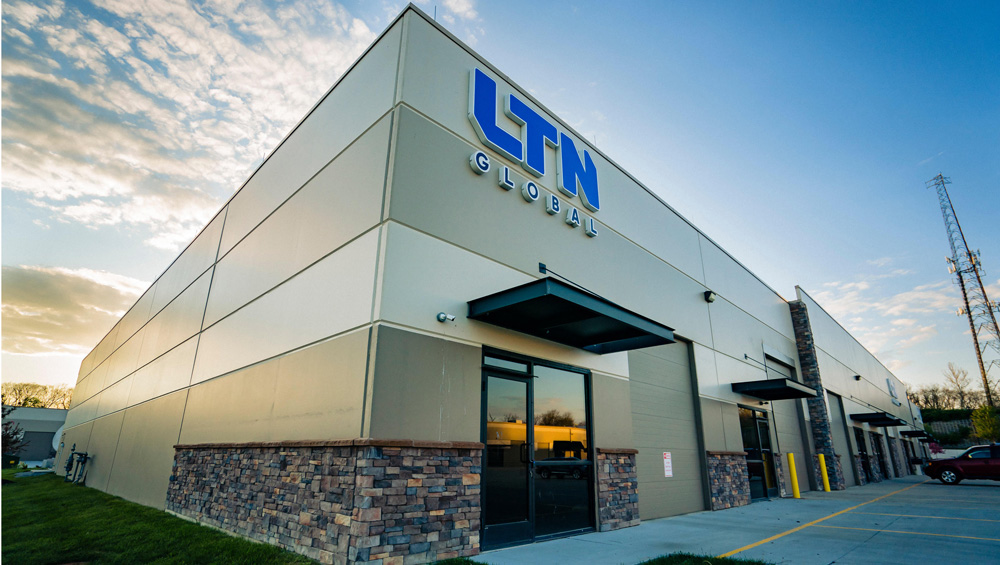
Remote Production Spurs A Pivot To New Products And Facilities

Since the COVID-19 pandemic began roiling the broadcast industry in March 2020, technology vendors have stepped up to create new products and new facilities to meet the challenges of remote production. While the COVID situation in the U.S. has improved markedly this year and many broadcasters have returned to their studios, usage of these new remote production tools hasn’t slowed down as networks and sports leagues appreciate the new flexibility and efficiency they provide.
The common denominator among these new remote production systems is using the internet for live video and audio transmission as well as device control, often in a hybrid architecture that combines software applications running in the public cloud with traditional on-premise hardware located at a broadcast center or studio. They also include a healthy dose of the type of traditional customer service that broadcasters have come to expect from their key vendors.
CP Communications’ CamSTREAM And Streaming Studios
Several mobile production specialists pivoted last year to create new remote production options. CP Communications, a longtime provider of wireless audio and video links, RF frequency coordination and other production services for live sports and entertainment events, had its core business basically halt overnight. As the company worked to help its customers, it saw a need to provide higher-quality video and audio from remote contributors than could be achieved over conventional videoconferencing systems like Zoom.
So, CP created a turnkey system to solve the problem called CamSTREAM. With Wi-Fi, ethernet or bonded cellular connectivity, CamSTREAM includes a compact Sony or Panasonic PTZ (pan-tilt-zoom) camera that can be controlled remotely through a web interface; lavalier or handheld mic; an H.265 encoder; and a 10-inch built-in HD monitor for watching return video. Compact enough to fit in a standard flight case, CamSTREAM can be FedEx’d to talent and set up in less than 10 minutes. It can be leased or purchased, with the price ranging from $15,000 to $23,000 depending on configuration (adding a bonded encoder, for example, costs more).
CamSTREAM has since been adopted by CBS and other major networks to pipe remote talent into studio shows and to provide remote commentary for live events, as well as by several large corporations. There are about 50-100 systems deployed in the field today. Developing a high-speed return video capability for the system was key.
“The sports use is obvious,” says CamSTREAM COO Jerry Gepner. “If you have a commentator at home, the faster you can get him or her the return feed, the closer you are to real time. You’re never going to get it to zero, but we’ve been able to get coast-to-coast down to about half a second.”
CP Communications is also offering new IP-based remote production services through Red House Streaming Studios, a 5,600 square-foot facility the company has created within its St. Petersburg, Fla., headquarters comprising a conventional studio equipped with several CamStreams, a separate green screen stage and an adjoining control room running software-based production tools like the VMix production switcher. The Red House facility is being used for a range of streaming and broadcast productions, leveraging a dedicated data circuit from Crown Castle.

CP Communications’ green screen stage at Red House Streaming Studios in St. Petersburg, Fla.
While the bulk of the work at Red House is headed to Facebook Live or YouTube, the studio is also used regularly by a U.K.-based client to provide OTT and broadcast coverage of second tier (Formula 4) auto racing in the U.S. in what Gepner calls a “fast return” workflow, based on WebRTC transport. Sometimes this client even uses a Red House control room to “pre-switch” camera feeds before they are sent back to the U.K., thus cutting down on bandwidth requirements.
“We’ve designed for them a package of 10 to 12 bonded cell encoders and cameras that they are able to send out in the field to cover a particular race,” Gepner says. “And they do send a production manager. But there is no truck, and there are no onsite commentors. It’s done as a REMI using this technology, and they’re assembling it back in the U.K. And it’s near real-time — within a couple seconds it’s on the air.”
Ross Repurposes Connecticut Facility
Ross Production Services, the in-house production and rental services division of equipment manufacturer Ross Video, was faced with a similar predicament in March 2020 when sports production shut down and left its six mobile units sitting idle. That’s when RPS Technology Manager Matthew Webster and Senior Broadcast Production Specialist Logan McDonald set about finding a way to repurpose the equipment in the trucks and at its Wallingford, Conn., headquarters.

Logan McDonald

Matthew Webster
“We took equipment we had lying dormant and kind of pieced it together to figure out how to do a hybrid REMI distributed workflow,” McDonald says. “The theory being if you’re doing shows in the cloud, that’s just someone else’s equipment that’s somewhere else. So, let’s make our broadcast center, our warehouse that we have in Connecticut, just another point in the cloud.”
The RPS team began exploring the best way to bring in feeds from remote talent and let production personnel see multiviewers with low latency. They developed their own secure web portal to access feeds and created their own software encoders and decoders and chose Web RTC for transport and the Amazon Web Services cloud to manage the feeds and production communications. The feeds are then brought from the AWS cloud into the Connecticut facility for processing using traditional on-premise hardware such as Ross Ultrix routers and Carbonite production switchers.
“Instead of using virtualized, like a vMix [software-based switcher] in the cloud, we’re taking all those signals and using AWS technology to transport the video, and the data like our comms signals,” McDonald explains. “That flows through AWS, but it all lands back into hardware just as if it was a traditional truck. So, what it does is it leaves us without any restrictions on how we produce a show, because we don’t have to concede any kind of limitations of doing a show all in AWS. Because we’ve built out three control rooms at our Connecticut facility that run traditional broadcast hardware.”

The broadcast center at Ross Production Services in Wallingford, Conn.
By July 2020, RPS had the hybrid cloud solution up and running to produce a FIFA e-sports event. There were only two on-site personnel in Connecticut, an audio mixer and replay operator, while the technical director and graphics operator were both in Canada and the rest of the production staff were spread out between Canada and California.
Since then, the hybrid solution has stayed busy with a mix of e-sports and traditional sports coverage include College Gameday and several awards shows for ESPN; last week it was being used to cover an e-sports world championship with production staff in Canada and remote camera feeds coming in from players around the world. RPS has also created remote commentary kits that it provides on a per-event basis to several networks.
While the traditional live sports business has rebounded and RPS’s fleet has grown to eight mobile units, cloud-based production now accounts for about a third of the company’s work. It has allowed RPS to grow its e-sports business while also being more competitive against bigger mobile vendors for event coverage like awards shows, Webster says.
“We’ve gotten a lot of extra stuff from existing clients that we never would have gotten before,” he says.
LTN Ramps Up IP Production
Another vendor seeing a lot more business for its IP production services is LTN Global Communications. In addition to providing fully managed IP transmission services for top broadcasters using its “internet overlay” technology of private data centers and proprietary routing protocols, LTN also owns a 30,000 square-foot production facility outside Kansas City, Mo., as well as six mobile units.
 The two-year-old K.C. facility has some 75 staffers and is purpose-built for centralized and REMI production using LTN’s low-latency network. It is regularly used to facilitate coverage of college football and other sports for several major networks.
The two-year-old K.C. facility has some 75 staffers and is purpose-built for centralized and REMI production using LTN’s low-latency network. It is regularly used to facilitate coverage of college football and other sports for several major networks.
By leveraging the public internet as an access point to its managed network, LTN is able to bring the sort of multi-feed connectivity that high-speed fiber links have long provided to big-market stadiums and arenas to venues across the country, allowing for more REMI production, says Mike Burk, GM of LTN’s Event Production and Transmission Unit.
“Our network has allowed us to provide that same concept and take it to the masses,” Burk says.

Mike Burk
LTN uses its network for IP production in several ways. It can bring multiple camera feeds back to the K.C. for switching there in a traditional REMI-style production. It also operates in “hybrid” mode, using its low-latency network to remotely control truck components like graphics and replay in the field. And like CP Communication and RPS, it has also created “home kits” with a built-in camera, intercom and return video to facilitate remote commentary for clients.
Business is good, Burk says, with both transmission traffic and production jobs ramping up markedly through the pandemic.
“The overall exposure to LTN’s ecosystem has really helped throughout COVID,” Burk says. “Everyone knew of LTN as just a network. But because of the production capabilities that we have and the facility that we built, it exposed people to the entire ecosystem.”
BitFire Fills Remote Production Need
A new company taking full advantage of the industry’s shift to remote production is BitFire Networks, which was launched in July 2020 specifically to provide IP-based live transmission and production services.

Bob Sullivan
The company was founded by former Scripps and Tegna programming executive Bob Sullivan with his brother Timothy, a former CEO of several large manufacturing companies, with input from broadcast veterans like Ken Aagaard, former CBS Sports EVP of operations. Bob Sullivan serves as president and CEO, while his brother is chairman; Aagaard is the other board member.
BitFire started with the acquisition and merging of two Boston-based companies: D2 Productions, a traditional live production house with a 6,000 square-foot facility and two mobile trucks; and Journey, an IP transmission software firm founded by D2 employee Jim Akimchuk (who is now BitFire CTO). The former D2 facility now serves as the master control center for the BitFire Transport Network, a managed IP transmission system that can be accessed via the browser-based “FireBridge” or through the FirePower, a stackable HD server.
The company has created its own remote talent contribution system consisting of a server and PTZ camera, integrated mics and two-way audio and video communications, which is used regularly by networks like MLB Network and Fox News Channel as well as syndicated shows like Tamron Hall and Judge Jerry. BitFire continues to pick up new business for its remote transmission services, helping Dancing with the Stars navigate a COVID crisis this week with two of its dancers and providing live remotes for American Idol this fall.
MLB Network first worked with BitFire to remotely produce its coverage of the 2020 NHL Draft. It now uses the company’s remote talent system every day to support the show High Heat, with MLBN reporter Alana Rizzo live from her home, as well as on a monthly basis by analyst Mark DeRosa, who uses it to contribute remotely from his home in Atlanta.
“It really has given us the ability to be so nimble and to have great content on our air, and to able to access announcers and analysts that we maybe normally wouldn’t be able to get, because they wouldn’t be in Secaucus and we’d have to have them as a phoner,” says Susan Stone, SVP operations and engineering for MLB Network.
“To have a visual presence on our air, it’s been super-solid and really a game-changer for us.”
BitFire has greatly expanded its capabilities with the launch this week of BitFire Studios, a 16,000 square-foot production facility in Phoenix with multiple studios, sound stages and control rooms including a dedicated “virtual production” studio equipped with high-resolution Planar LED display walls and floors. The new BitFire Studios is also home to Bandit Productions, a separate content development company founded by the Sullivan brothers, and Do Not Peek Entertainment, a gaming and e-sports production company.

BitFire’s high-resolution Planar LED display walls and floors at its Phoenix facility
The goal for BitFire Studios is not only to serve as a local production hub in the rapidly growing Phoenix market. The company also wants to use its IP connectivity and virtual production capabilities to support production from anywhere, including pumping in live talent from remote green-screen stages and shooting them in the LED-equipped studio. Sullivan says the new production capabilities are a natural complement to BitFire’s transmission business.
“We’re a full-service provider,” Sullivan says. “We’re not about servers — we’re about helping you with your live production.”

































Comments (0)